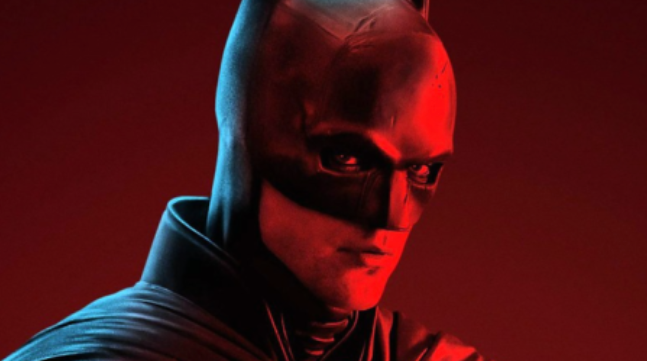
Photo courtesy of
Variety
.
Many know Batman as a precise, dominant and lethal figure. He defines what an anti-hero is in the world of superheroes and villains. The previous two versions of the caped vigilante have been full of poise and brutality in their own distinctive ways, but similarly experienced with their crime-fighting. In American film director Matt Reeves’
The Batman
(2022), we watch a young Bruce Wayne (Robert Pattinson) in his introductory years as Batman as he takes on the dark depths of the crime that have riddled the city of Gotham, specifically in the form of the Riddler (Paul Dano).
The Batman
introduces the Riddler before it introduces us to the caped crusader. This introductory scene uses the Riddler’s first-person point-of-view to define what scenario is about to unfold. The use of different point-of-views throughout the film is a common occurrence and continuously immerses us in the action by providing us with dynamic perspectives of a scene’s environment. Throughout this first sequence, it is apparent that the Riddler is deranged and sloppy in his violence, but calculated in the rest of his execution.
The Riddler’s elaborate schemes to catch the city’s (specifically Batman’s) attention plays as a solid foil for this new version of the vigilante. While brutal in his implementation of justice, this latest effort sheds light on Batman’s intelligence that we have only briefly touched upon in his previous iterations.
The Batman
has its considerable share of traditional crime-fighting, but the Riddler’s puzzling plans give Batman the ability to work alongside police commissioner James Gordon (Jeffrey Wright) in a manner that is unlike its predecessors. Gordon primarily served as a voice for the people when interacting with Batman in the Christopher Nolan series, but
The Batman
shows him being almost entirely complicit in the vigilante’s approach to crime.
This new version of Batman also shows his timidness that comes from his lack of experience. We see Batman often hurt in his brawls by regular thugs and henchmen, instead of the untouchable being that audiences normally know him for. Also, his self-confidence is clearly not all there, such as in a scene where he is hesitant to take flight off of a building and ends up crashing and injuring himself.
The Batman
constantly reminds us that Batman is not only Batman, but also Bruce Wayne.
Shot mostly in the dark,
The Batman
attributes much of its dialogue and tone to past noir stylizations. The film is incredibly gritty, with every flash of light catching the eye and brightening an entire shot. Most of the film’s cinematography is so carefully choreographed that it feels picturesque at times with its coloring and set designs. There is a scene towards the latter half of the film where Batman is leading a group of survivors out from a sunken landscape and his presence is solely illuminated by a neon-colored flare. The film uses lighting for beautiful moments of symbolism like this, so we understand that this man is a true ray of hope within this terrorized city. Additionally, the darkness that drapes over much of the film’s action plays in favor of the stunt choreography as it masks much of the CGI or editing tricks that would be obvious in daylight.
Catwoman (Zoë Kravitz) is also reintroduced in this new iteration. Every scene between Catwoman and Batman feels like a power struggle, where one is constantly trying to guide the moral compass of the other. The film also showcases a natural romantic chemistry between the two that is unparalleled by their precursors.
Carmine Falcone (John Turturro) and the Penguin (Colin Farrell) also add on to the film’s star-studded supporting cast. Both play traditional mobsters that you would see straight out of a Martin Scorsese film. The Penguin particularly feels like an amalgamation of Robert De Niro’s performances in such films. In contrast, Farrell’s performance serves as a justified comedic relief to the film which can often drown in its own somber tone a little excessively.
The film hits most of the marks that a gritty superhero thriller should, but it sometimes almost feels like it basks too much in its own intensity. Pattinson’s constantly stoic expression sometimes creates an unwanted sense of humorous irony in scenes that are supposed to be emotionally vulnerable. For instance, in a scene where Alfred Pennyworth (Andy Serkis) is revealing dark secrets about Wayne’s pedigree, Wayne responds in his typically monotone delivery, effectively taking viewers right out of the intimate moment and back into “Batman mode.” Several of the film’s one-liners also felt like their intent was to create an exciting trailer more so than how they sounded within the actual context of the complete film.
The aesthetic that Reeves strived for with
The Batman
is emphatically bolstered by American composer Michael Giacchino’s brilliant job of creating a haunting and brooding score to match the film’s attitude. Full of bells and strings, the musical qualities of the film consistently envelope each scene perfectly.
The Batman
begins with Bruce Wayne having a cynical attitude towards his occupation. He resents the city of Gotham for taking away his parents and subsequently becoming a landfill of crime and all that is evil. Unlike most vigilante tales though, we do not witness Batman’s fall from grace within the public eye. Rather, we see Wayne develop sympathy for the city and its inhabitants who he protects. Yet after he generalizes Gotham as the embodiment of criminality, he realizes that many people are just trying to find a purpose, the Riddler and himself included.
The Batman
realizes that the hero does not only have to be a source of pain for villains everywhere, he can also be of assistance to those in need.